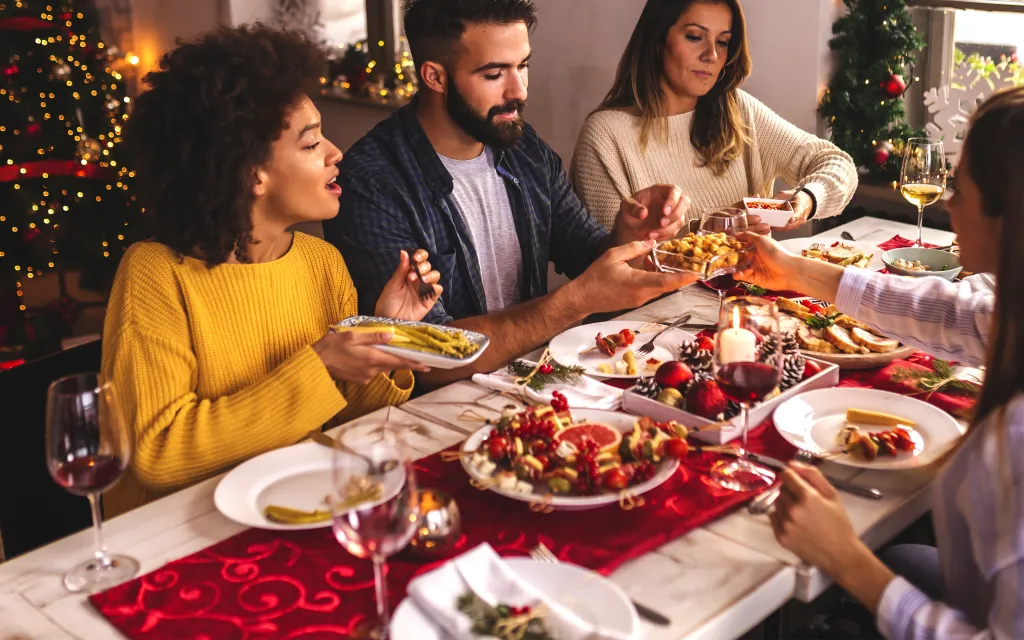
Denmark is a small nation whose cultural unity is mitigated by regional traditions of rural, urban, and island communities with distinctions based on local language, food, and history. This situation has sometimes created friction between local history and national history.
The kingdom of Denmark, which is situated in Scandinavia and northern Europe, is surrounded by the North Sea, Skagerrak, Kattegat, and the Baltic Sea.
Jutland, Zealand, and Funen (Fyn) are the largest and most densely populated regions.
Danish belongs to the Germanic family language within the Indo-European languages. Linguistic relatives are English, German, Swedish, Norwegian, and Icelandic, all of which descend from the ancient Teutonic language.

Danish folklore consists of folk tales, legends, songs, music, dancing, popular beliefs, myths and traditions communicated by the inhabitants of towns and villages across the country, often passed on from generation to generation by word of mouth. As in neighbouring countries, interest in folklore grew with an emerging feeling of national consciousness in 19th century Denmark. Researchers travelled across the country collecting innumerable folktales, songs and sayings while observing traditional dress in the various regions. Folklore today is part of the national heritage, represented in particular by national and local traditions, songs, folk dances and literature.
There are many Celebrations custos that are exclusive to Denmark:

- Cinnamon and pepper on 25th and 30th birthdays. In parts of Denmark, it’s customary that if someone is not married yet on their 25th birthday that their friends will find them and cover them in cinnamon. If they’re still single on their 30th birthday, they can expect the same but with pepper this time.

- Sankt Hans is an old tradition in Denmark, where Danes celebrate the longest day of summer. The roots of Sankt Hans date back to the Middle Ages (1600), when it was a ceremony to expel witches. It is now celebrated throughout Denmark with bonfires, songs, drinks and lots of fun. Cities often host large bonfires, and many host private bonfire parties. Don’t be surprised to see a handmade straw witch being burned.

- Fastelavn is something like a combination of Halloween and carnival. Held in mid-February, it is traditionally rooted as the beginning of Lent. Nowadays, people dress up in costumes and hit a barrel full of candy (like a pinata); Fastelavn is mainly intended for children, although adults want to take part in it too. A long time ago, it was a tradition to put a black cat in a barrel, but it is not done that way today. If you’re not attending Fastelavn, you’re sure to see plenty of children in costumes everywhere.

- Julefrokost (Christmas Lunch) is a Christmas celebration that takes place from November to February. People in Denmark usually take part in a lot of Julefrokosts, celebrating with colleagues, friends, family, sports groups, etc. So if you’re the life of the party, Julefrokosts can really come in handy. In Julefrokosts, people sit down and have a real feast, all the time interrupted by drinks and songs. It has all the ingredients for a great party and needless to say, it almost always turns into one! So if you’re going for such a lunch, take the next day off from work, because you’ll definitely have to sit there until midnight.
Danish Customs:
- Danish workplaces have some of the flattest work structures in the world. This is very reflective of the Danish culture and their value on equality. What this means is that discussions and feedback are generally encouraged and can be shared between people regardless of role/title. This creates a good social environment at work, which can make it a good place to find new friends.
- It’s no secret that Danes enjoy a good beer, and most of their celebrations involve drinking. They drink and smoke the most out of all the Scandinavian countries. It’s quite common at most workplaces to have Friday Bars at the office with your colleagues. It’s a great time to socialize, so you should join even if you don’t imbibe.
- Studying at the university is free. Moreover, Danes actually receive an SU scholarship during their studies. This is a great government initiative that has been around for a long time. The amount of money awarded through SU depends on your individual situation, but generally Danes over the age of 18 who have moved out of their parents’ home and are studying receive around €800 a month.
Christmas:
Danish Christmas is celebrated in the evening on December 24, and the country virtually shuts down. Even the city buses stop running between 17.30-22.00 so that everyone can enjoy dinner with their families. Denmark’s electrical and gas utilities can measure a spike in usage when people across the country turn on their ovens to cook the traditional roast duck, roast pork, or roast goose. The traditional side dishes are caramelised potatoes and pickled red cabbage.
Easter:
Because Easter is a moving holiday, it sometimes falls in March when Denmark is still quite chilly, and sometimes in late April, when the bright Danish spring is already well underway. Danish families usually get together for a big Easter lunch that lasts all afternoon. Traditions such as painting hard-boiled eggs in Easter colours, going on egg hunts, and rolling eggs downhill are popular among children and adults alike.

